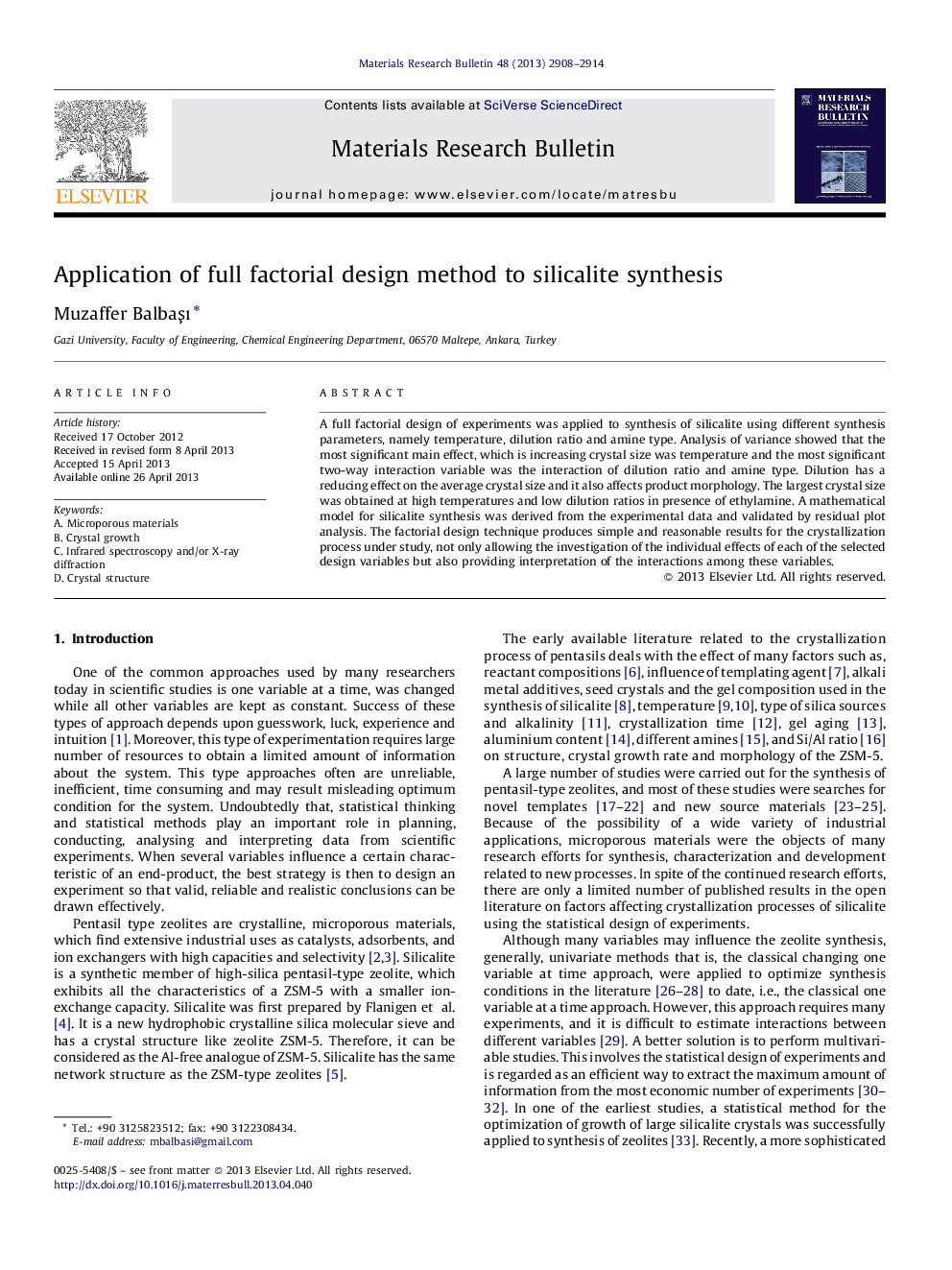| Article ID | Journal | Published Year | Pages | File Type |
|---|---|---|---|---|
| 1489025 | Materials Research Bulletin | 2013 | 7 Pages |
•The full factorial design of experiments was applied to synthesis of silicalite.•Key synthesis parameters are temperature, dilution ratio and organic amine type.•The largest crystal size was obtained at high temperatures and low dilution ratios.•Dilution has a reducing effect on the average crystal size and product morphology.•A mathematical model was proposed to address the variables effect on crystal sizes.
A full factorial design of experiments was applied to synthesis of silicalite using different synthesis parameters, namely temperature, dilution ratio and amine type. Analysis of variance showed that the most significant main effect, which is increasing crystal size was temperature and the most significant two-way interaction variable was the interaction of dilution ratio and amine type. Dilution has a reducing effect on the average crystal size and it also affects product morphology. The largest crystal size was obtained at high temperatures and low dilution ratios in presence of ethylamine. A mathematical model for silicalite synthesis was derived from the experimental data and validated by residual plot analysis. The factorial design technique produces simple and reasonable results for the crystallization process under study, not only allowing the investigation of the individual effects of each of the selected design variables but also providing interpretation of the interactions among these variables.
Graphical abstractFigure optionsDownload full-size imageDownload as PowerPoint slide
